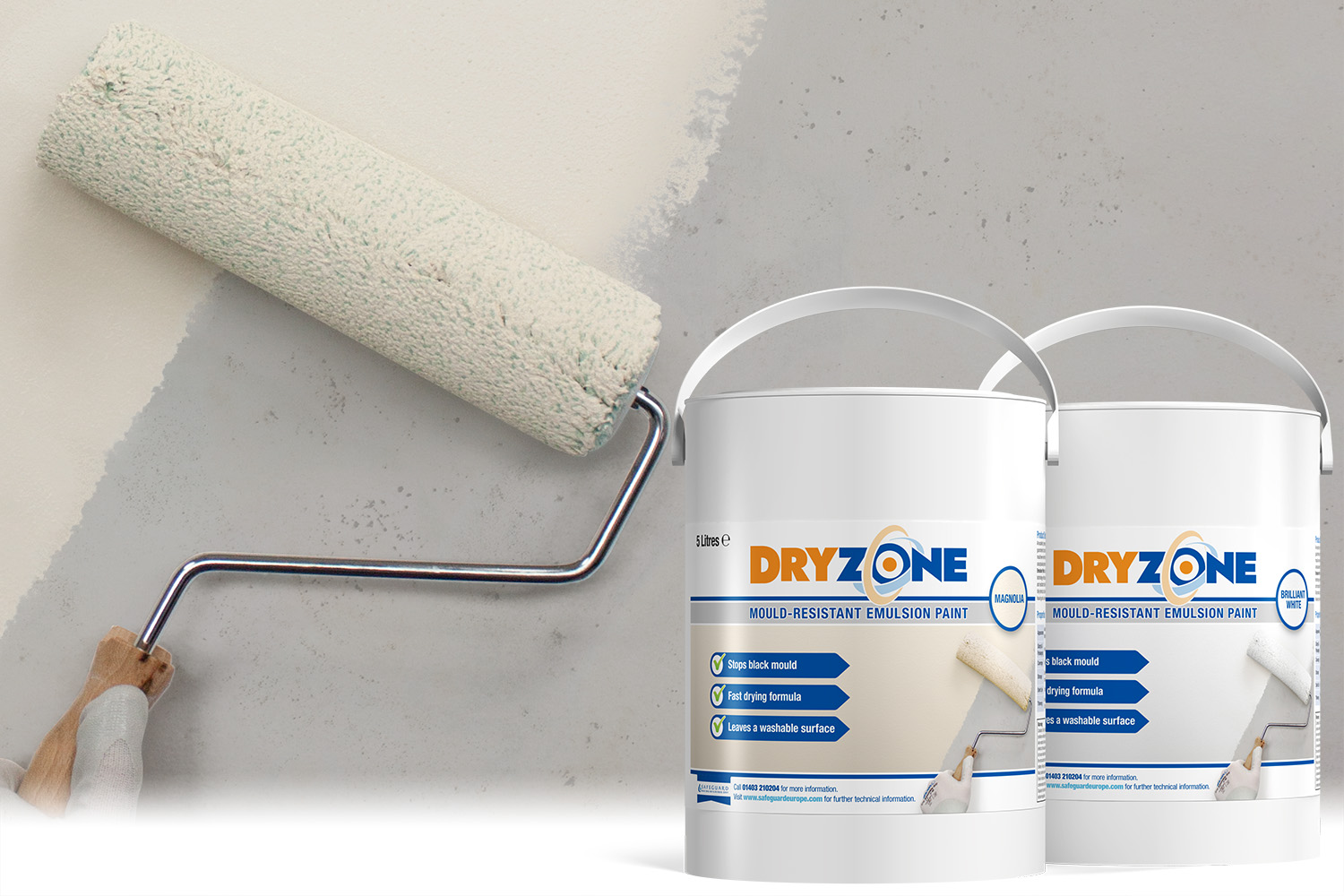Black Mould on Walls – Causes, Symptoms, Prevention & Treatment
Black Mould on walls (Stachybotrys chartarum, Aspergillus niger or others) is often a sign of a serious problem in your home that needs to be thoroughly investigated. It is often caused by excess condensation, usually as a result of a lack of ventilation in the home that results in high humidity levels. In short, it is a sign that the air in your home contains too much moisture.
It is often a sign of an underlying damp problem. As well as affecting the integrity of your home’s building fabric, the NHS states that mould growth can cause or worsen respiratory infections, allergies or asthma. Black mould symptoms like coughing, runny nose and increased sneezing can lower quality of life and lead to health complications.
Learn About:
- What is black mould?
- Where does black mould grow?
- What causes black mould ?
- Black mould on walls: health risks and black mould symptoms
Find out how to:
- How to get rid of black mould
- How to prevent black mould
- How to remove black mould from showers
- How to remove black mould from walls
- How to get black mould off grout
- How to get rid of black mould on walls caused by condensation
- How to get rid of black mould on walls caused by penetrating damp
- How to get rid of black mould on walls caused by rising damp
- How to clean black mould from your washing machine
What is black mould?
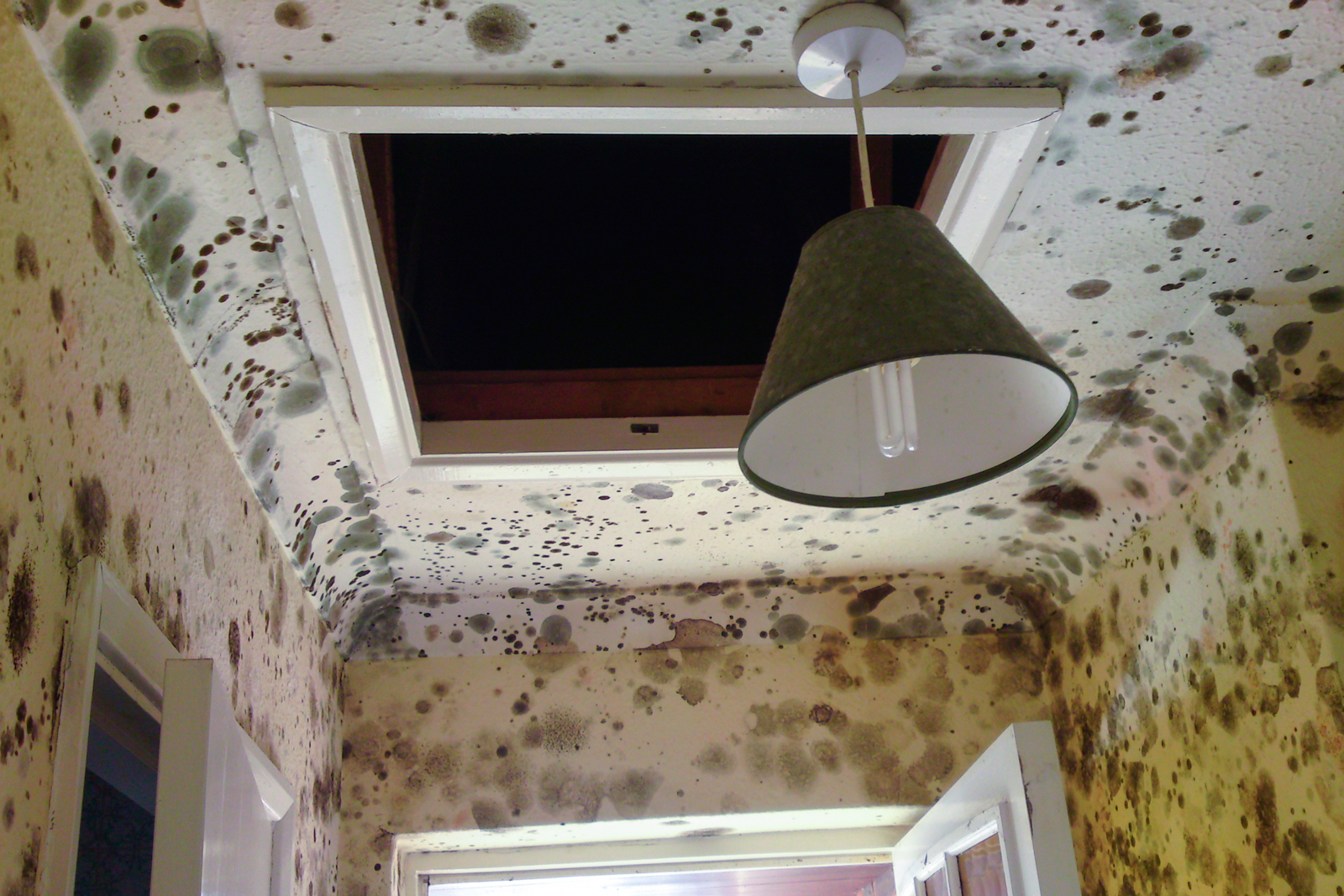
Black mould is a type of common fungus also known as “Aspergillus Niger”. This is the same type of mould that grows as black fur on fruits, vegetables and grains. In homes, mould spores land on moist surfaces inside the home and begin to grow.
Another ‘black mould’ common in the UK home environment is Alternaria. This is an umbrella term for hundreds of species’ of fungus that are found almost everywhere on the planet. The Alternaria fungus that causes black mould growth is an allergen and can trigger hay fever or even asthma in rarer case.
Cladosporium is a black mould fungi type that forms dark spider web-shaped stains. Cladosporium spores are omnipresent in the outside environment, and it is very common for them to find a moist place to grow indoors.
Another type of UK black mould is Stachybotrys chartarum, although this fungi is rarer and could present a more severe problem. Sometimes known as ‘toxic black mould’, Stachybotrys chartarum loves building materials like wallpaper, gypsum and fibreboard. It thrives on damp walls of all types. Although scientifically disputed, this type of mould has been linked to the controversial ‘sick building syndrome’.
Mould caused by dampness is often found in areas of high humidity, like bathrooms and kitchens. These rooms are more susceptible due to the steam generated through cooking and washing. This kind of dampness can be easily prevented with appropriate ventilation measures like making sure windows are open. However, it can appear in any room in the house and is closely associated with rising damp and penetrating damp.
Frequently Asked Questions
-
Is black mould harmful?
Yes. Black mould is a health hazard and a sign of building dampness. Mould spores are allergens and irritants. Babies, the elderly and people with compromised immune systems are especially at risk. In cases of black mould growth, the dampness source needs to be rectified as soon as possible. -
What does black mould do to humans?
Humans can unknowingly inhale invisible mould spores. Doing so irritates our lungs and can trigger an allergic reaction. Increased sneezing, a runny nose and a sore throat are all common symptoms of black mould exposure. -
What causes black mould in a house?
Increased humidity levels inside the home cause black mould growth. Black mould spores are common, millions of them are all around us in the atmosphere. It is only when spores experience increased humidity levels that they germinate into black mould. -
How do you get rid of black mould?
Black mould stain is easy to wipe away. This often gives the false impression that the problem has gone. Bleach solution clears the visible stain, but black mould will always grow back without using a penetrating biocidal cleaner to kill mould hyphae. -
Can I remove black mould myself?
In most household cases, yes. A 2-part treatment of bleach-based and biocidal cleaners gets rid of black mould and keeps it away for 6 months. This treatment gives you the chance to solve the underlying damp issue and prevent black mould permanently.
Where does black mould grow?

Black mould on walls
Wherever you are in the home, mould on walls is a common problem. Look for black and grey splotches.
Early warning signs of potential mould growth are damp spots anywhere on walls. In the living room, mould growth will be bad in areas of poor ventilation. Always look behind furniture. Keep furnishings away from walls.
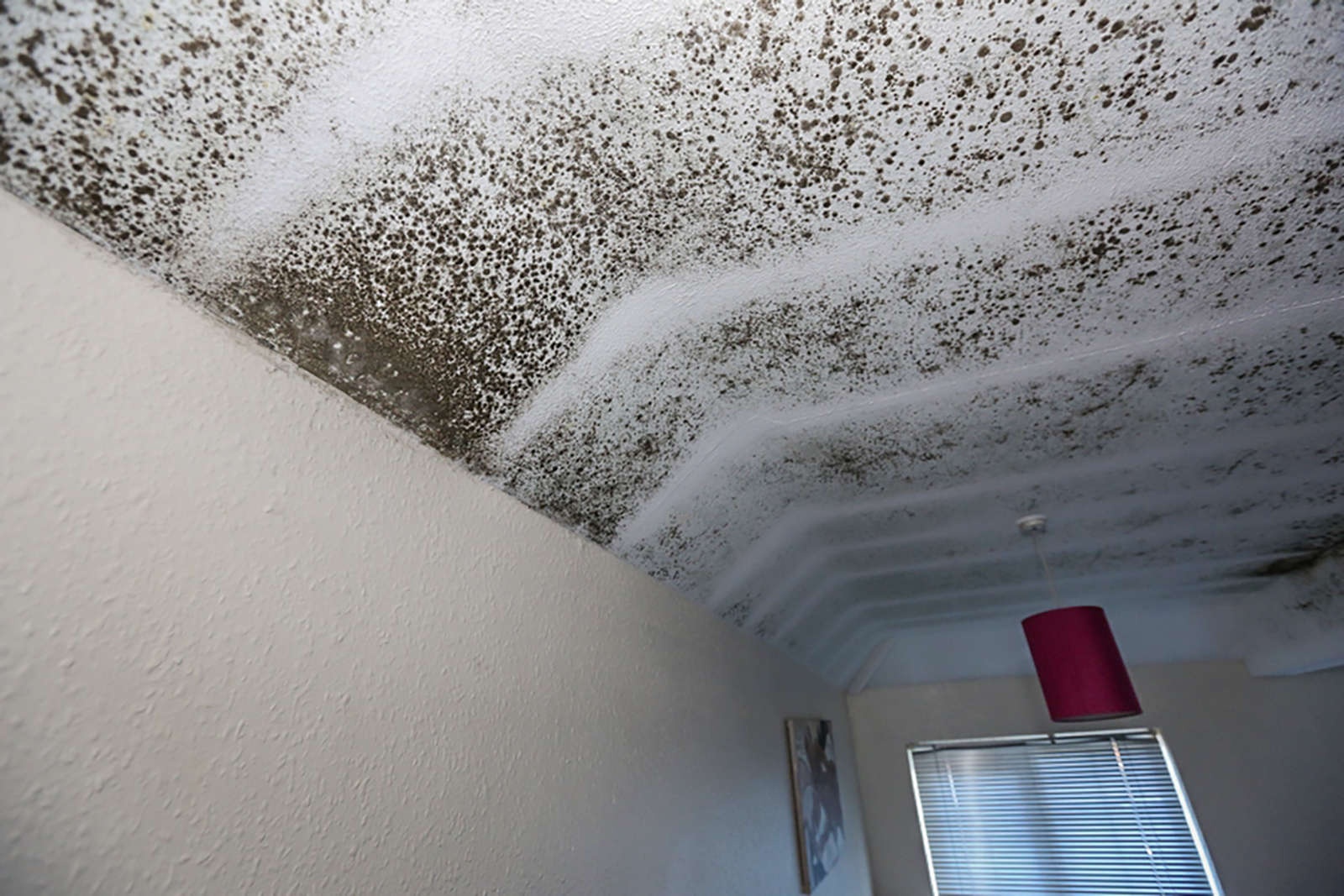
Black mould on ceilings
Excess condensation or dampness growing on the ceiling can be the result of poor ventilation. It can also occur when a source of moisture is hiding in the loft. This could be from a leaking water source, a damaged roof or poorly installed insulation.

Black Mould in kitchens
Often an unwanted result of condensation-generating activities. Cooking and cleaning create steam so ensure your kitchen is well-ventilated.
Explore the ventilation options available to you if your kitchen requires more ventilation. Always remember to open windows when cooking and washing up.
Black mould in bathrooms

Black mould in bathrooms and black mould in showers are common problems that can be difficult to solve due to the high levels of moisture generated by hot showers, baths and hand washing.
Black mould on uPVC window sealant and black mould on bathroom sealant is particularly difficult to clean. In bad cases, it is more effective in the long run to replace the silicone sealant entirely than attempt to clean it. Mouldy sealant is often a sign that the seal itself is no longer water-tight, and so will need replacing to stay waterproof.
Black mould on bathroom ceilings becomes a problem without adequate ventilation. Building Regulations Part F was updated in 2022 to ensure that ‘wet rooms’ such as bathrooms and kitchens always provide appropriate ventilation for the amount of moisture that is usually generated in these rooms.
Black mould on windows
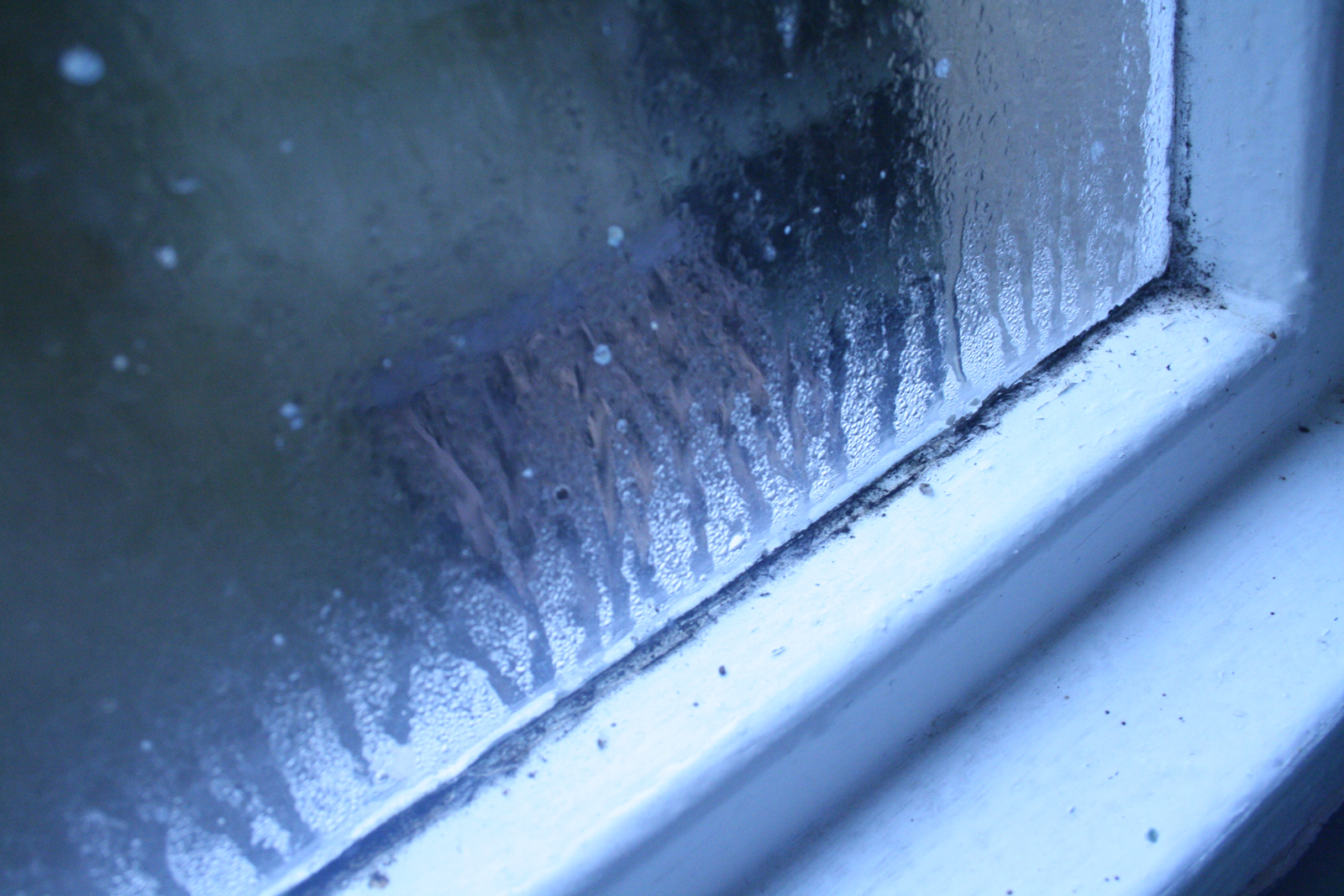
Condensation often collects on windows, presenting as wet streaks on the glass. This is often because glass is colder than the surrounding wooden or uPVC frame and so attracts condensation. This is known as ‘cold-bridging’.
High concentrations of moisture lead to black mould on windows and black mould around windows. Window sills are a good first place to look. Generally, black mould cultivates in hard-to-reach corners like window frames or window sills. It often spreads to the walls near it too.
Make sure window seals are tight and undamaged. Check for gaps between window panes and window frames.
Do you have double-glazing installed on your windows? If you live in an older home, they may not be. Consider investing in this energy-saving measure to prevent excess condensation. Broken window hinges can also cause colder areas which will attract condensation.
Black mould in bedrooms

High levels of humidity or dampness in the home leads to black mould growth on walls and ceilings. Depending on the moisture involved, bedroom mould often begins in the corners of the room, where condensation is collected as it tries to exit the home.
Poor ventilation is usually the cause. Ensure that beds, wardrobes and other pieces of furniture are not blocking air from escaping the home. Ensure the windows are opened regularly to encourage air circulation.
In cases of penetrating damp, mould in bedrooms can show at any height. This is because dampness penetrates through the exterior wall to the interior wall, often from wind-driving rain.
Other signs of black mould growth
Follow your nose! Even if you can’t see any visible signs of black mould growth, you may be able to detect a musty, stale and earthy smell.
What causes black mould?
Mould fungi are almost always present in our environment, surviving for years undetected in the dry. When the conditions are right, previously dormant mould spores grow. Mould thrives in damp and dark places. Often water leaks and damp problems provide a perfect environment for mould growth on walls.
Mould on walls develops when mould spores hit damp walls. In the right conditions, mould can develop in 24 – 48 hours. Over time a small mouldy spot can turn into brown or black patches. To treat mould on walls effectively, the source of dampness must be found and rectified before effective cleaning can commence.
Black mould on walls: health risks
Black mould symptoms
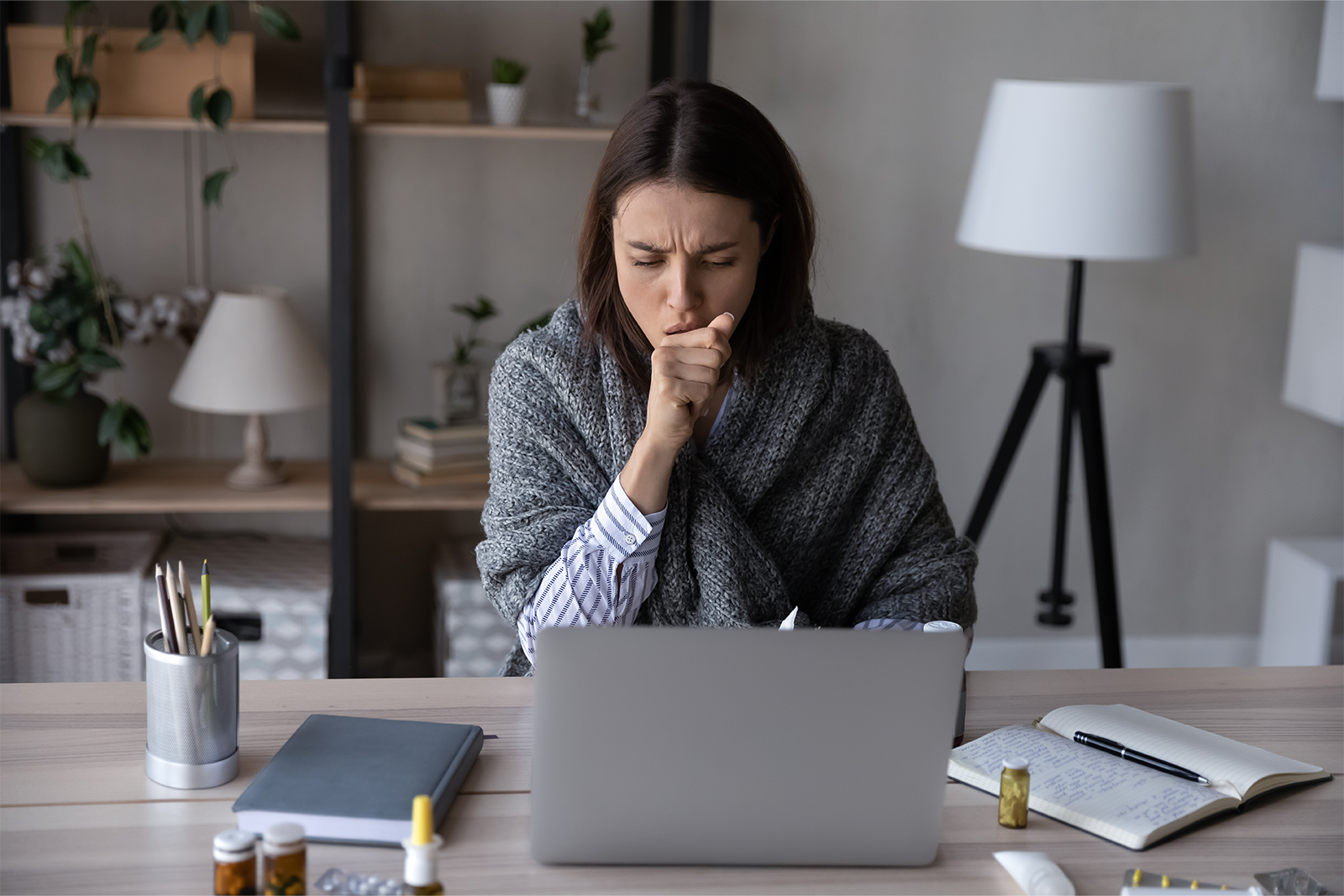
Damp conditions and associated black mould growth can affect the immune system. Moulds generate allergens, which can cause irritation. Some moulds even emit toxic substances. Some people are more susceptible to mould spores than others.
Black mould symptoms are often mild. They may initially be misdiagnosed as a cold or seasonal allergies, especially in cases where mould is less visible.
Black mould symptoms to look out for:
- An increase in sneezing
- A runny nose
- Eye inflammation causing reddening
- Skin rashes or inflammation
- An otherwise unexplained increase in attacks for asthma sufferers
Black mould is bad for everyone. However, some people should always stay well away. Mould exposure may cause pre-existing condition complications and other adverse effects.
- Children
- Older people
- Those with respiratory problems
- Those with a weakened immune system
- Those with existing skin problems
Even if you aren’t in a high-risk category or you don’t feel any symptoms, you should never live in a home with mould growth. Black mould should be removed and prevented from returning as soon as possible.
How to get rid of black mould
On walls
Correct diagnosis of the cause of black mould growth is paramount. Explore these most common causes to ensure the underlying problem is fixed before you begin cleaning.
Black Mould on walls caused by condensation
Condensation is one of the biggest sources of mould growth on walls. Condensation occurs when water vapour contained in the air condenses on cold surfaces and creates a damp environment. There are many reasons why a house might have excess levels of condensation:
- Lack of ventilation
- Obstructed airflow
- A high level of moisture-creating activities like cooking, washing and drying
Remove and Prevent

A 2-part biocidal mould cleaning system. Mould Eliminator removes the mould stain, leaving no visible trace. The biocidal Mould Sanitiser keeps mould away by penetrating deep into the substrate to get rid of the invisible cause of the growth.
Restore and Protect
After eliminating the mould, walls can be treated with Dryzone Mould-Resistant Emulsion Paint. This mould-resistant paint stops mould growth, even in areas with persistent condensation, for at least 5 years.
Black Mould on walls caused by penetrating damp
Penetrating damp is caused by outside moisture breaching the internal walls. Wind-driven rain is often the reason, although faulty guttering and other sources of moisture can also cause penetrating damp. In all cases, water ingress must be resolved to stop penetrating damp. Find out more about Penetrating Damp.
Stormdry Masonry Protection Cream is a colourless, water-repellent treatment, which is applied directly to the outside of masonry. One coat of Stormdry stops water from penetrating brickwork and thus prevents a damp, habitable environment ideal for mould growth.
Black mould on walls caused by rising damp
Dealing with mould that is caused by rising damp is also more complex than just cleaning the mould. Rising damp is caused by groundwater rising through masonry to cause dampness. The Dryzone System offers a full range of products to stop rising damp and treat affected walls. By treating the source of dampness walls can fully dry out, eliminating the possibility of mould caused by rising damp. Find out more about Rising Damp.
The Dryzone System offers a full range of products to stop rising damp and treat affected walls. By treating the source of dampness walls can fully dry out, eliminating the possibility of mould caused by rising damp.
How to remove black mould from walls
You may find that black mould seems quite easy to wipe away with a wet cloth. While a standard supermarket bleach black mould remover clears away mould stain, within the week it always returns.
Although bleach eliminates the stain, it does not kill the entire fungus. Black mould loves moisture.
The hyphae of the black mould surface live under the surface they grow on. These invisible tendrils feed on the moisture left after the bleach treatment to regrow black mould. This means that solely using a bleach spray to combat mould growth actually feeds it in the long term. Survival of the hyphae is why mould often comes back, even after cleaning.
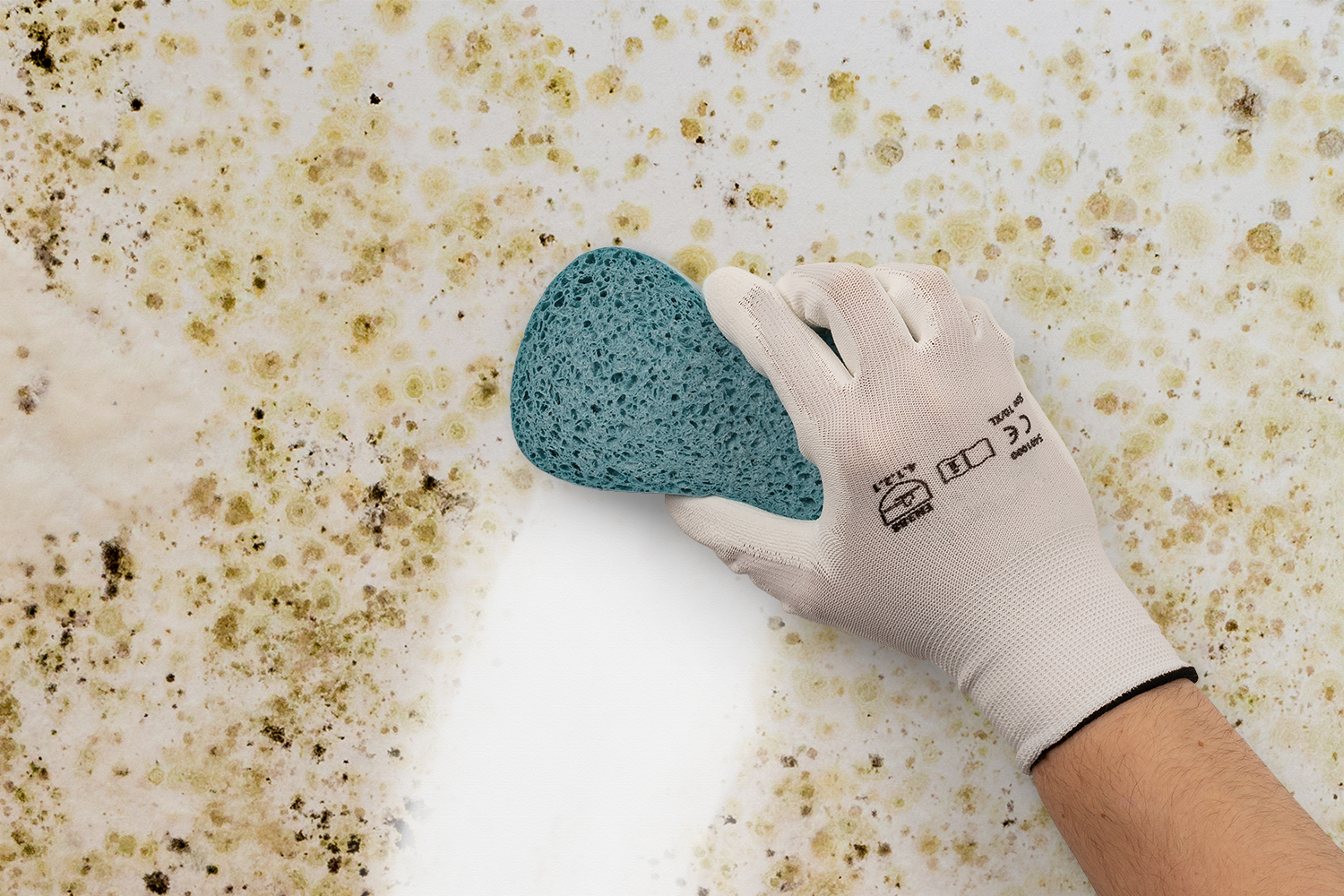
“Aspergillus Niger” is biological growth. The way to combat biocidal growth is a biocidal remover. This is sometimes also known as an anti-fungal wash. The Centre for Sustainable Energy recommends a two-stage method for black mould removal:
- Bleach Spray to clean the stain. Leave to dry overnight.
- Apply biocidal treatment to eliminate the hyphae.
The CSE also recommends painting mould-susceptible walls with mould-resistant paint to ensure the surface does not harbour mould growth again.
But destroying all elements of the black mould is still not enough. For mould to grow, it must be fed. Black mould spores need moisture to cultivate fungal growth. If the relative humidity in the home is over 50%, then excess condensation sets the stage for invisible mould spores to settle back onto the substrate and start the cycle once more. Explore here to diagnose and fix excess condensation in your home.
How to remove black mould from showers
A 2-part mould removal and prevention course will successfully remove black mould from:
- Shower tiles
- Painted walls
- Shower heads, shower hoses and shower controls
A bleach-based spray followed by a biocidal cleaner, wiped away using a microfibre cloth is the most effective black mould control method.
How to get black mould off grout
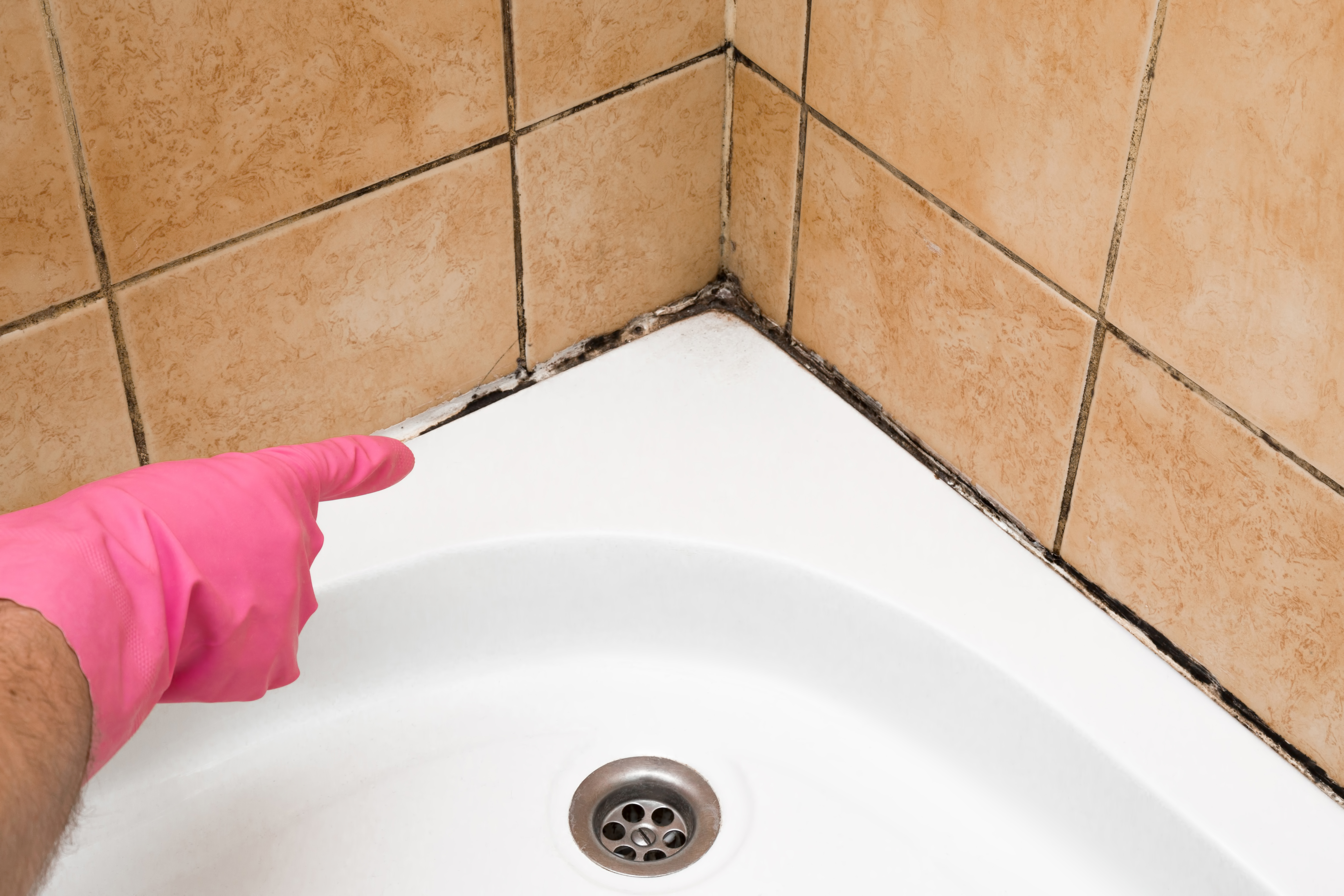
Removing black mould off grout in bathrooms can be a challenge. This is because grout is very porous – it readily absorbs moisture. Nobody fully towel-dries the shower cubicle after every use and so the constant moisture attracts mould.
Scrub thoroughly in between tiles with a 2-part bleach and biocidal mould cleaner to properly make that grout shine. Always use a firm bristled brush.
Beware! Black mould on grout can be stubborn. Weaker supermarket bleach mould killers are generally not up to task. You may need to scrub thoroughly, leave overnight, wash and repeat as needed. Another great cleaning hack is to mix small amounts of bleach with bicarbonate of soda. As bicarb is mildly abrasive, it loosens tougher spots of mould while bleach cleans the stain.
In the worst cases, think about replacing the grout itself. Look for water-resistant, epoxy grouts. These are stain-resistant and durable in wet environments like bathrooms. Avoid cement-based grouts in bathrooms.
Following cleaning, always ensure you apply a biocidal cleaner to prevent mould regrowth.
When using any cleaner, always ensure you wear appropriate protection like gloves and only use in well-ventilated areas.
How to prevent black mould
Mould thrives in damp, dark places. It is often caused by condensation. However, other damp problems can also be the cause of mould growth on walls.
Dampness inside masonry and other parts of the building fabric can create a habitable environment for mould. These hidden mould infestations can damage your home without you even knowing it.
Possible sources of dampness in masonry are rising damp, penetrating damp or even water leaks. To prevent mould growth caused by damp inside masonry, all damp patches and signs of dampness should be investigated as soon as they appear. A fully qualified damp surveyor should carry out this inspection to determine the correct source of dampness.
Condensation is the most common cause of mould on walls. To prevent mould growth, the dwelling should be properly ventilated and adequately heated. By exchanging damp air inside houses with fresh air from outside, moisture is less likely to condense on cold surfaces like walls. Keeping houses warmed to at least 18°C in winter ensures a less habitable environment for mould spores.
Take care when carrying out tasks that generate high amounts of water like:
- Cooking
- Cleaning
- Showering and bathing
Always ensure you ventilate when carrying out these activities, whether by simply opening a window or turning on your extractor fan, Positive Input Ventilation Unit or another type of ventilation.
However, ventilation and heating alone cannot prevent mouldy walls. Some rooms, especially bathrooms and kitchens in flats or HMOs. More advanced measures like ventilators or extractor fans may be more suitable, depending on the environment.
